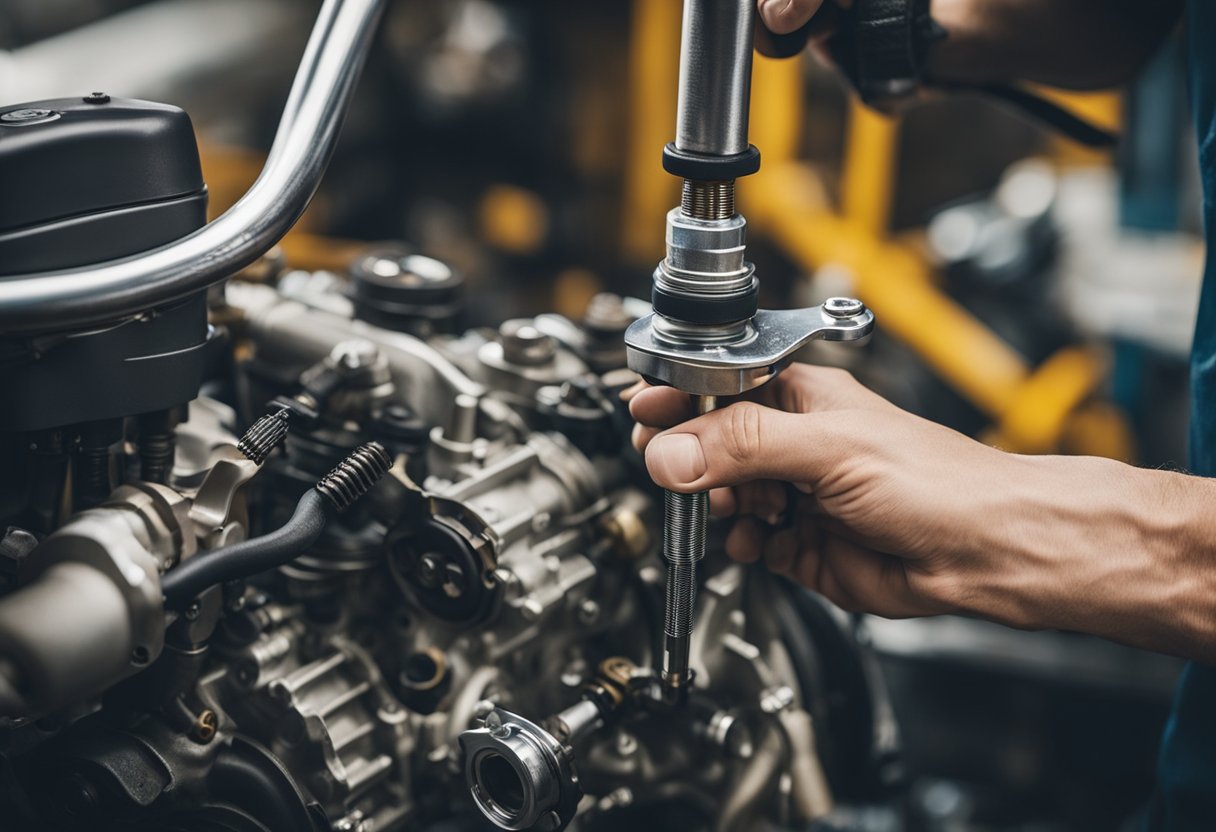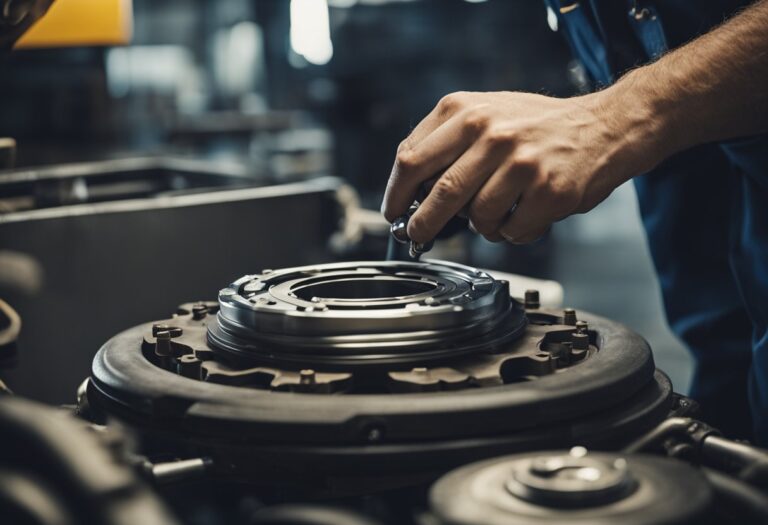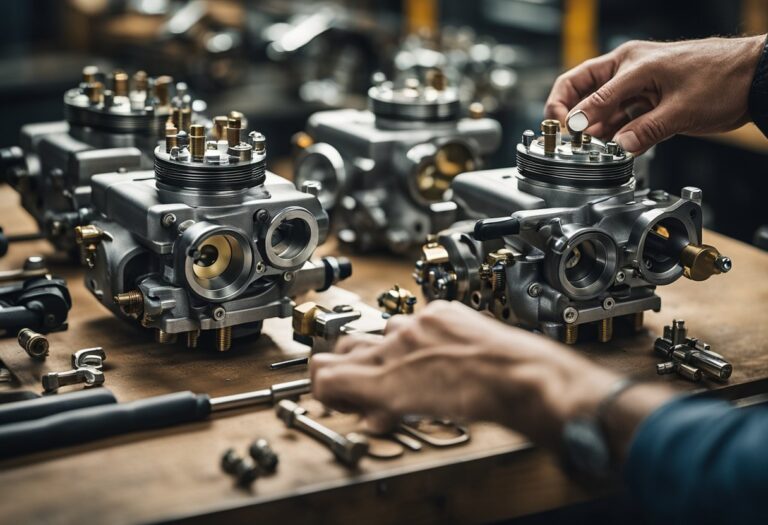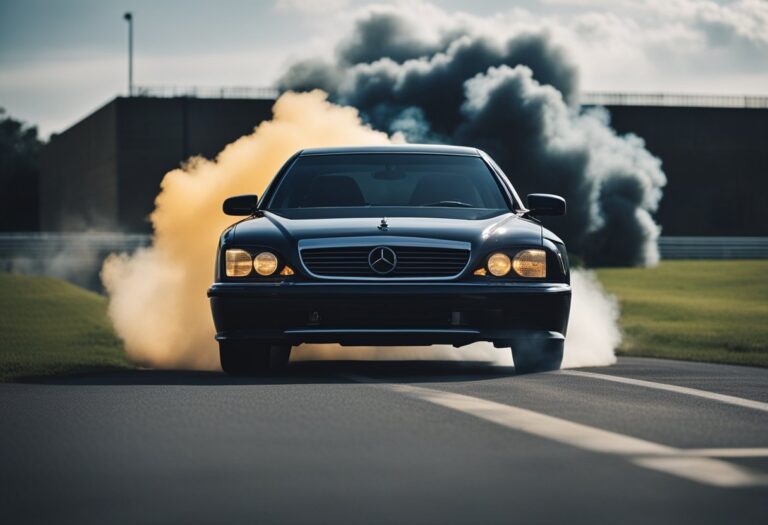How to Clean a Motorcycle Carburetor: A Step-by-Step Guide
Cleaning a motorcycle carburetor is a crucial part of maintaining the performance of your bike. Over time, carburetors can become clogged with debris, causing the engine to run poorly or not at all. Properly cleaning the carburetor can restore your motorcycle’s power and improve its overall performance.

Before diving into the cleaning process, it’s important to understand the function of the carburetor. A carburetor is responsible for mixing air and fuel in the correct ratio, which is then delivered to the engine. When the carburetor becomes clogged, this ratio can become imbalanced, causing the engine to run poorly. By cleaning the carburetor, you can restore the correct air/fuel mixture and improve the performance of your motorcycle.
Key Takeaways
- Cleaning a motorcycle carburetor is crucial for maintaining the performance of your bike.
- Understanding the function of the carburetor is important before beginning the cleaning process.
- Properly cleaning the carburetor can restore the correct air/fuel mixture and improve the performance of your motorcycle.
Understanding Carburetor Function

A carburetor is a device that mixes air and fuel in the correct proportion for combustion in an internal combustion engine. Carburetors were once a standard component on almost all gasoline engines, but they have been largely replaced by fuel injection systems in modern vehicles.
The basic function of a carburetor is to control the flow of air and fuel into the engine. The carburetor achieves this by using a series of valves, jets, and other components to regulate the amount of fuel and air that enters the engine. The carburetor also plays a key role in determining the engine’s fuel efficiency and overall performance.
One of the key components of a carburetor is the throttle valve. The throttle valve controls the flow of air into the engine, and it is typically controlled by a pedal or lever in the vehicle’s cockpit. When the driver presses down on the accelerator pedal, the throttle valve opens, allowing more air to enter the engine. This increased air flow causes a corresponding increase in fuel flow, which results in increased power output from the engine.
Another important component of a carburetor is the fuel jet. The fuel jet is responsible for regulating the amount of fuel that enters the engine. The size of the fuel jet can be adjusted to fine-tune the carburetor’s performance for a particular engine or driving scenario.
Overall, understanding the function of a carburetor is essential for anyone who wants to maintain or repair their motorcycle’s engine. By knowing how the carburetor works, riders can identify and resolve issues related to fuel efficiency, power output, and overall engine performance.
Safety Precautions

When cleaning a motorcycle carburetor, it is important to take certain safety precautions to avoid any accidents or injuries. Here are some safety tips to keep in mind:
- Always wear protective gear such as gloves and safety goggles to prevent any harmful chemicals or debris from getting into your eyes or skin.
- Make sure the motorcycle is in a well-ventilated area to avoid inhaling any fumes or chemicals.
- Turn off the motorcycle and disconnect the battery before starting the cleaning process.
- Use a fire extinguisher nearby in case of any accidental fires.
- Avoid smoking or using any open flames near the motorcycle while cleaning the carburetor.
- Keep any cleaning chemicals away from pets and children.
By following these safety precautions, you can ensure a safe and successful cleaning process for your motorcycle carburetor.
Tools and Materials Needed

To properly clean a motorcycle carburetor, there are a few essential tools and materials that you will need. These include:
Tools:
- Screwdrivers (flathead and Phillips)
- Pliers
- Carburetor cleaner
- Compressed air
- Gloves
- Safety goggles
Materials:
- Clean rags
- Container for soaking carburetor parts
- Carburetor rebuild kit (if necessary)
It is important to have all of these tools and materials on hand before beginning the cleaning process. This will ensure that the job is done efficiently and effectively.
The screwdrivers and pliers will be used to remove the carburetor from the motorcycle and disassemble it. The carburetor cleaner and compressed air will be used to clean the various parts of the carburetor. Gloves and safety goggles are recommended to protect your hands and eyes from any harmful chemicals.
Clean rags are necessary to wipe down the carburetor and its parts after cleaning. A container for soaking carburetor parts is also needed to ensure that all parts are thoroughly cleaned. If any parts are damaged or worn, a carburetor rebuild kit may be necessary to replace them.
By having all of these tools and materials ready, you can clean your motorcycle carburetor with confidence and ease.
Preparation for Cleaning

Before starting to clean a motorcycle carburetor, it is essential to prepare the necessary tools and equipment. This will help to ensure that the task is completed safely and efficiently. Here are some important steps to follow before cleaning a motorcycle carburetor:
Step 1: Gather the necessary tools and equipment
The first step in preparing to clean a motorcycle carburetor is to gather all the necessary tools and equipment. This includes a carburetor cleaner, a carburetor rebuild kit (if necessary), a container to soak the carburetor in, a wire brush, a soft-bristled brush, and safety equipment such as gloves and goggles.
Step 2: Remove the carburetor from the motorcycle
The next step is to remove the carburetor from the motorcycle. This can be done by following the manufacturer’s instructions or by consulting a repair manual. It is important to disconnect the fuel line and any other connections before removing the carburetor.
Step 3: Disassemble the carburetor
Once the carburetor has been removed from the motorcycle, it is important to disassemble it carefully. This involves removing all the jets, needles, and other parts from the carburetor body. It is important to keep track of all the parts and their locations to make reassembly easier.
Step 4: Soak the carburetor in carburetor cleaner
The next step is to soak the carburetor in carburetor cleaner. It is important to use a container that is large enough to fully submerge the carburetor. The carburetor should be left to soak for the recommended time, which is usually between 30 minutes to an hour.
Step 5: Clean the carburetor
After the carburetor has been soaked, it is important to clean it thoroughly. This can be done using a wire brush and a soft-bristled brush. It is important to be gentle when cleaning the carburetor to avoid damaging any of the delicate parts.
Following these steps will help to ensure that the motorcycle carburetor is cleaned safely and efficiently. It is important to take the time to prepare properly before starting the cleaning process to avoid any accidents or damage to the motorcycle.
Disassembling the Carburetor

Removing the Carburetor
Before disassembling the carburetor, the first step is to remove it from the motorcycle. To do this, the fuel line and throttle cable must be disconnected from the carburetor. The fuel line can be removed by loosening the clamp that connects it to the carburetor and gently pulling it away. The throttle cable can be disconnected by loosening the locknut on the cable adjuster and sliding the cable out of the carburetor’s throttle linkage.
Once the fuel line and throttle cable are disconnected, the carburetor can be removed from the motorcycle. This is typically done by removing the bolts or screws that hold the carburetor in place on the intake manifold.
Separating the Components
With the carburetor removed from the motorcycle, the next step is to disassemble it. This involves separating the various components of the carburetor so that they can be cleaned and inspected.
The first component to remove is the float bowl. This is typically held in place by screws or bolts and can be easily removed. Once the float bowl is removed, the float and needle valve can be removed as well.
The next component to remove is the main jet. This is typically located in the center of the carburetor body and can be removed using a small flathead screwdriver. The pilot jet and idle mixture screw can also be removed at this time.
Finally, the throttle slide and needle can be removed from the carburetor body. This is typically done by removing the retaining clip that holds them in place and gently pulling them out.
By following these steps, the carburetor can be disassembled and its various components can be cleaned and inspected.
Cleaning the Carburetor

Inspecting the Components
Before cleaning the carburetor, it’s important to inspect the components to identify any damage or wear. Start by removing the carburetor from the motorcycle and disassembling it. Check the gaskets, o-rings, and seals for any signs of damage or wear. Inspect the float needle and seat for any wear or damage that could cause fuel leaks.
Soaking and Scrubbing
To clean the carburetor, the first step is to soak it in a carburetor cleaner. Choose a cleaner that is safe for the materials used in the carburetor. Follow the manufacturer’s instructions for the soak time. After soaking, use a soft-bristled brush to scrub the carburetor to remove any remaining dirt or debris. Pay special attention to the small passages and jets.
Cleaning Small Passages
Cleaning the small passages in a carburetor is crucial for proper fuel flow and engine performance. Use a carburetor cleaning tool or a thin wire to clean the small passages and jets. Be careful not to damage the passages or jets while cleaning them. After cleaning, blow compressed air through the passages to remove any remaining debris.
By following these steps, you can clean a motorcycle carburetor to improve fuel flow and engine performance. Remember to reassemble the carburetor correctly and adjust the settings according to the manufacturer’s specifications before reinstalling it on the motorcycle.
Reassembling the Carburetor

After cleaning the carburetor thoroughly, it’s time to put it back together. Reassembling the carburetor is a straightforward process, but it’s important to be meticulous and pay attention to detail.
First, place the carburetor gasket onto the intake manifold and align the carburetor on top of it. Make sure the throttle plate is closed before tightening the bolts that hold the carburetor in place.
Next, install the float bowl and tighten the screws evenly to avoid any leaks. Reconnect the fuel line and tighten the clamp securely.
Now it’s time to install the jets and needles. Refer to the manufacturer’s instructions for the correct placement and torque specifications. It’s important to use the right tools and not overtighten the screws.
Finally, install the air filter and air box, making sure they are clean and free of debris. Double-check all connections and hoses to ensure they are secure.
Once the carburetor is reassembled, it’s important to test it before riding. Start the engine and let it idle for a few minutes to ensure everything is functioning properly. Check for any leaks or unusual sounds and make any necessary adjustments.
By following these steps, reassembling the carburetor should be a simple and successful process.
Reinstalling the Carburetor

After cleaning the motorcycle carburetor, it is time to reinstall it. Here are the steps to follow:
- Place the carburetor back into its position on the motorcycle. Make sure that all the hoses and cables are properly connected to the carburetor.
- Tighten the bolts or screws that hold the carburetor in place. Use a torque wrench to ensure that the bolts or screws are tightened to the manufacturer’s specifications.
- Reconnect the fuel line to the carburetor. Make sure that the fuel line is properly connected and tightened.
- Reconnect the throttle cable and adjust it if necessary. The throttle cable should be adjusted so that there is a little bit of play in the cable when the throttle is closed.
- Reconnect the choke cable and adjust it if necessary. The choke cable should be adjusted so that there is a little bit of play in the cable when the choke is off.
- Reconnect any other hoses or cables that were disconnected during the removal process.
- Double-check all connections and make sure that everything is properly tightened and secured.
By following these steps, the carburetor should be reinstalled correctly and the motorcycle should run smoothly.




